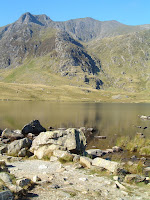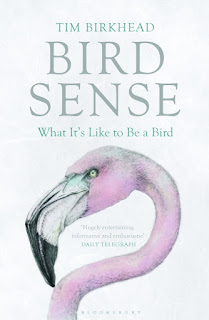Perfect outdoor kit for boys
In the comments section of yesterday's post, Lucy asked if I'd write about what to wear and take on a nature adventure. It put me in mind of an article I must have read twenty years ago, by the equipment editor of a climbing magazine. It was his last article before retiring, and he was going to own up: despite all the fancy gear he received, he mostly went out in the hills wearing a smelly jumper and a pair of old jeans.
And I've always remembered that article because it points to a greater truth: that we don't need hi-tech, lightweight, waterproof and breathable, see-you-home-in-the-dark clothing to enjoy a day outdoors. Not that you'd believe it in places such as Keswick or Hathersage where the shopping has become as important as the landscape. But we're trying to get away from all that, right? And most of us are heading for a day on the moors, rather than a Scandinavian winter. So with that in mind we can get by without spending a fortune or worrying unduly about the fashion police.
Footwear is always my first consideration, and though I have a pair of very good walking boots, I mostly use lightweight outdoor shoes. My favourites are a pair of Salomon trail boots, which are pricey, but the Hi-Tec company does much cheaper equivalents and it's possible to find very good value on the Internet. Aside from winter mountaineering there are very few places in Britain that you'll truly require dubbed leather boots. I'm actually a big fan of wellies too, and know people who swear by those cheap suede bog trotter boots - I once met a bloke who'd walked the entire Pennine Way in those.
Waterproofs come next, and not a word of a lie, my favourite cost me six euros from a Decathlon store in France. It's a brown Pertex smock that packs the size of a large sandwich; it's featherlight, windproof and even supposedly breathable - and it's cut like a bin bag which means you can slip it over almost anything. They're available in the UK but any pac-a-mac equivalent will do. Of course, I wouldn't use this as my only waterproof on a full day in the hills with a threatening sky - but for most times, when the worst that happens is you get a bit damp before heading to the caff, I'd pack it in preference to coat that cost fifty times more.
For the rest - trousers and tops and all that, go for lightweight and lots of thin layers. Even in winter you're much better off with thermal leggings underneath some cotton trousers, than wearing heavy denim or tracksuits that soak up the damp. You can buy all manner of technical clothing, but you know what, most of it is marketing bollocks - and the rest is common sense.
But surely there's more to it than that? I'm tempted to say not really, but actually, I do have a few tips and tricks too. Sticks are excellent, and for all that retractable walking poles have become overly technified, they do make a difference (though fallen branches are almost as good) - they also make excellent swords for young boys to fight with. Cyclists use body-warmers to ward off wind-chill and they're excellent for walking too - just make sure you find ones with pockets. On the subject of which most people don't have enough and use rucksacks that are far too small - the extra weight of a larger sack is minuscule but if it means you can carry your kid's waterproofs and stuff in a bigger picnic and flask, it makes all the difference to your day.
Alpkit Gourdon sacs are cheap, light and very cleverly designed - they're a great online retailer too.
On the subject of kids, I have boys, and they like things like pocket knives, magnifying glasses, matches, i-spy books and notebooks - and I say that, not because I'm a middle-class throwback to the Sixties, it's because they work at engaging their interest. For something more modern, try a
fling sock which is possibly the most fun we've had from a present and in a different league to a Frisbee or a worse, a kite...
I have this theory that people only fly kites when they're bored. Another tip - keep spare clothes in the car; this is blindingly obvious but even we forget sometimes, and yet it makes such a difference if there's any sort of stream or lake they might fall in - because of course, they will.
For nature watching you need a decent pair of binoculars and those tiny ones won't do - if you want to save weight, buy a monocular (
try here) - they are way better for kids too. Most identification guides are too large and complex for practical use in the field so I often use the Collins mini gem series - no, they aren't perfect, but better to have something that might actually be opened. Back at home, I have a comprehensive library of guide books. What I use more than anything is my digital camera which is fantastic for snapping wild flowers, trees, even birds - I'm not looking for composition, just to identify them later.
In the outdoors, as in most areas of life, there's a balance. I don't want to wear tweed and plus-fours, but neither do I want to be one of those prats who've '
all the gear but no idea'. A little fashion is fine, but function is more important. The same goes for equipment - a map, a rucksack and a good picnic; that's enough on most days. Because most important of all is getting out there in the first place.











































